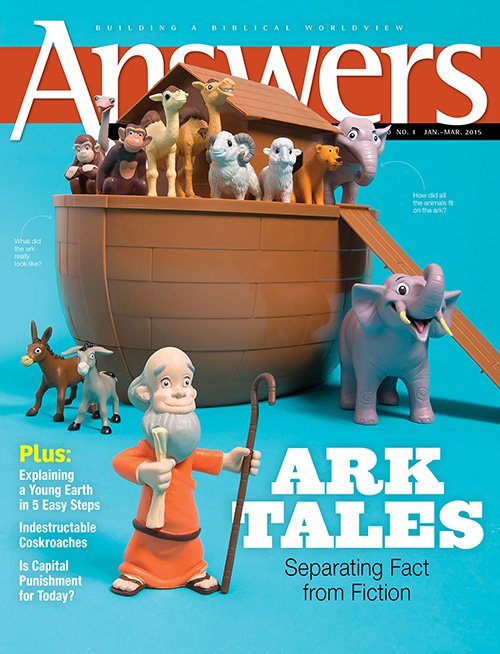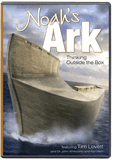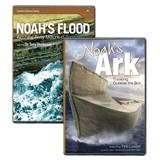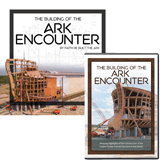Ark Tales—10 Popular Misconceptions about the Flood
• Illustrations by Dave Mottram
10 Popular Misconceptions about the Flood
The human mind has the uncanny ability to fill in details that simply don’t appear on the page. While this skill helps us digest information quickly and fill in gaps, it has a downside. We can miss important details or see things that aren’t there. That’s why publications need multiple proofreaders, since the mind naturally glosses over errors and “sees” what it expects to see.
This is an easy mistake to make when reading the Bible, too. We hear stories since childhood, graphically retold by imaginative Sunday school teachers and preachers. Then we sit down to read the text itself, expecting those details and voilà they’re there! Some misconceptions are relatively innocent, but others can lead to serious misunderstandings that ultimately cause people to question things the Bible never actually stated.
Misunderstandings are on full display when it comes to the biblical account of the Flood. Are you guilty of any of these ten common misconceptions?


It Never Rained Before the Flood
Many creationists insist the Bible teaches that rain had never fallen prior to the Flood. This idea largely comes from a phrase in Genesis 2:5: “. . . before any plant of the field was in the earth and before any herb of the field had grown. For the Lord God had not caused it to rain on the earth, and there was no man to till the ground” (emphasis added).
Is this verse referring to all of the time between Creation and the Flood? Certainly God could have created a different hydrologic cycle than the one in place now, but what is stated?
Another way to understand this passage is that it refers to the conditions prior to the first man and his Fall. That is, before Adam was created, rain had not fallen and two particular types of plants had not grown but would appear after he sinned. The plants mentioned in Genesis 2:5, the “plant of the field” and the “herb of the field,” refer to cultivated plants and desert shrubs, respectively.1 These are not the same plants mentioned as being created on Day Three (Genesis 1:11). The reason these plants had not grown yet is that “God had not caused it to rain on the earth, and there was no man to till the ground.” These conditions would soon change.
So rather than describing Earth’s conditions throughout the pre-Flood world, this verse is likely just explaining the environment prior to Day Six.

Pre-Flood Society Was Complete Chaos and Violence
Genesis describes the world as extremely wicked and violent prior to the Flood. “Then the Lord saw that the wickedness of man was great in the earth, and that every intent of the thoughts of his heart was only evil continually. . . . So God looked upon the earth, and indeed it was corrupt; for all flesh had corrupted their way on the earth” (Genesis 6:5, 6:12).
Since that world perished in the Flood (2 Peter 3:6), it is impossible to know exactly what it was like. Some people picture the antediluvian world as being utter anarchistic chaos, where everyone essentially did whatever anyone wanted at any time. This concept is similar to how the recent Noah film presented the pre-Flood world. But is this scenario likely?
The Lord Jesus spoke of that time period as well, so any ideas about pre-Flood civilization must take His words into account. “And as it was in the days of Noah, so it will be also in the days of the Son of Man: they ate, they drank, they married wives, they were given in marriage, until the day that Noah entered the ark, and the flood came and destroyed them all” (Luke 17:26–27).
The world described by Jesus seems to have had some law and order. In fact, the people participated in activities that have been common throughout history. Jesus didn’t even mention the violence of that world, although He did affirm that they were judged by the Flood.
Many civilizations throughout history have been filled with wickedness while still carrying on daily life. Ancient Rome built a grand society complete with law and order, roads, aqueducts, and impressive building projects. At the same time, Roman culture was quite wicked, filled with idolatry, violence, and sexual immorality. Another example is modern America. While much can still be admired, wickedness and violence have inundated American society. The same is true for our world at large. Perhaps other than technology we are not so different from the pre-Flood world.
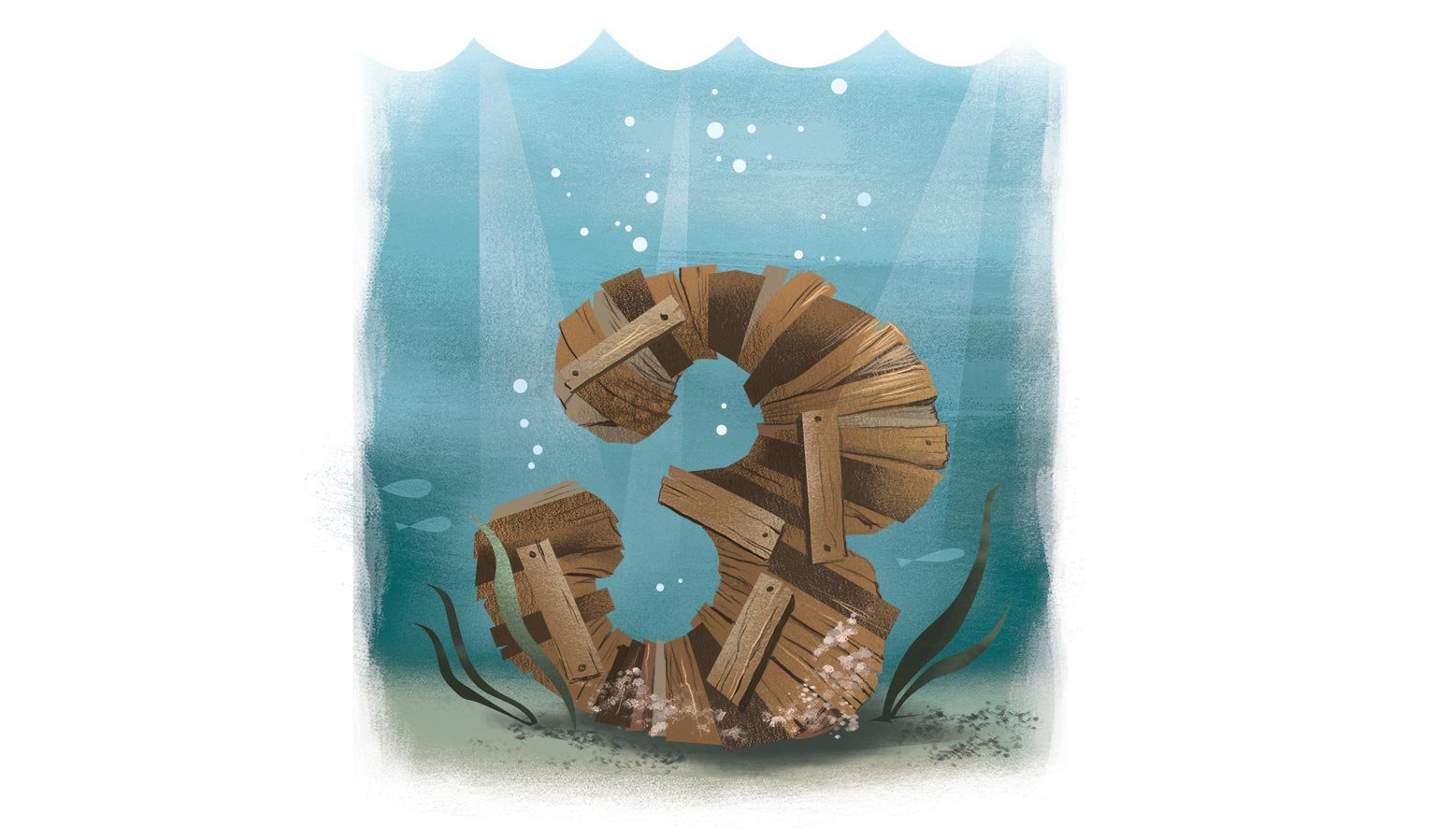
A Wooden Ark Would Not Be Seaworthy
Most images of the Ark show simple planks running parallel along the sides. Some people have written to Answers in Genesis and stated that there were no boats prior to the Flood, or that Noah was not a shipbuilder. So he must have built a simple boat like they see in the pictures.
But experts know that a wooden ship of such a massive size would ultimately break apart under the stress of ocean wind and waves, if it did not have the right design. Skeptics have picked up on this flaw and claim the Ark could not possibly remain afloat. They cite modern examples like the six-masted schooner Wyoming, built in 1909 on a scale a little smaller than the Ark, which twisted in the sea and eventually sank.
Yet it is a mistake to assume the Ark was designed in the same way. Building large wooden vessels is difficult but not impossible. Some ancient Greek warships were of a comparable size to the Wyoming, and they managed to stay afloat. The Wyoming is probably not the best example of excellent design!2
Furthermore, before jumping to conclusions it’s good to get the whole story. The Wyoming successfully transported thousands of tons of coal for over 14 years! The Ark needed to float for only about five months before landing on the mountains of Ararat.

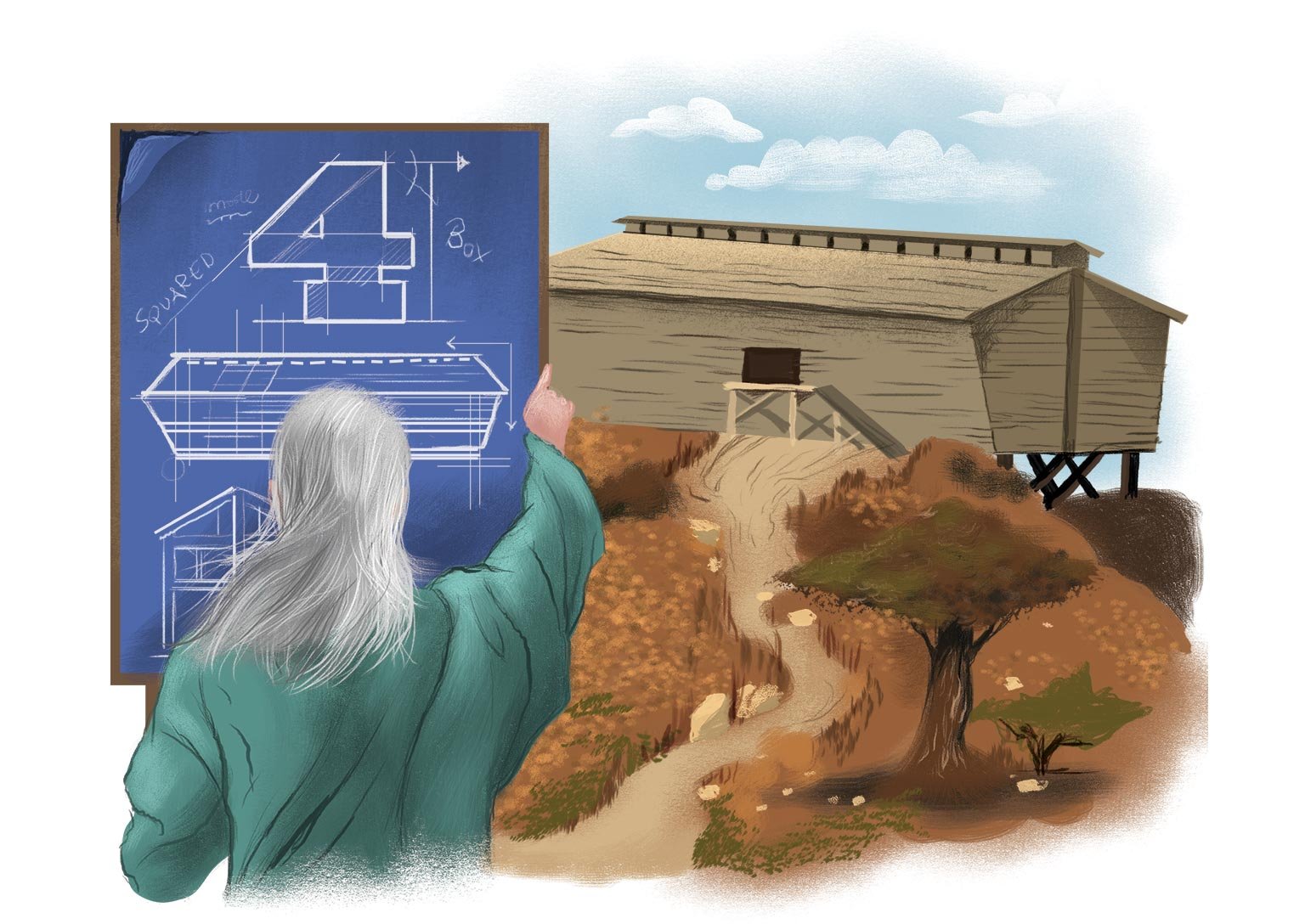
The Ark Was Box-Shaped
Perhaps no concept of the Ark has drawn more negative reaction from Christians than the sleek vessel being proposed for the Ark Encounter, now under construction in Kentucky. Convinced the Bible specifies that the Ark was shaped like a box, concerned Christians have argued against the bow fin and stern projection depicted on the Ark Encounter’s vessel.
What does the Bible really say about the Ark’s design? “The length of the ark shall be three hundred cubits, its width fifty cubits, and its height thirty cubits. You shall make a window for the ark, and you shall finish it to a cubit from above; and set the door of the ark in its side. You shall make it with lower, second, and third decks” (Genesis 6:14–16).
The length, width, and height of the Ark are listed, but do these figures demand a box-shaped Ark? Not at all! If my car’s dimensions were 190 x 54 x 64 inches, we should not assume it is box-shaped, since cars have aerodynamic curves. Similarly, all boats sport various other structures that maximize strength, stability, and comfort. Most specifications are based on the longest dimension, and it is reasonable to assume that the 300-cubit length of Noah’s Ark was the longest bow-to-stern distance.
Another assumption has been that Noah did not have the time, tools, or technology to build anything other than a simple box-shaped boat. But Hebrews 11:7 reveals that Noah built the Ark in reverent fear, indicating he would have been very careful to build it in a way that honored the Lord. After all, every land-dwelling creature and the human race depended upon the Ark’s safety.
Does the Hebrew word for ark reveal the boat’s shape, as many supporters of the box-shaped Ark have claimed? Significant uncertainty exists over the word’s origin and precise meaning. The Hebrew term (תֵּבָה, tebah) is very likely an Egyptian loanword, which would make sense given its two appearances in Scripture. Outside of the Flood account, the only place this word is used is for the basket or chest in which the baby Moses was placed (Exodus 2:3). Both passages have to do with a floating object that preserved life, and both were written by Moses, a man raised and trained in Egypt (Acts 7:22).
Given the uncertainty of the term’s precise meaning, we should refrain from dogmatism about the Ark’s shape, except that we can rule out the cutesy bathtub toy look portrayed in countless children’s books. The streamlined look of the Ark Encounter’s vessel was designed to maximize strength, stability, and comfort in turbulent seas. Noah’s Ark may have looked different, but short of finding the actual Ark, we do not know for certain.

Not Enough Room for All the Animals
How could one guy fit a million species of animals on a boat for a whole year? Even Christians wonder about this question. They assume the Bible says two of every species went onto the Ark, and they envision an overcrowded boat like the ones they’ve seen in illustrated Bibles or films. We need to look more closely at the text, because several mistaken assumptions are tied up in this question.
First, many believers have a difficult time conceptualizing the full scale of the Ark, whose massive size is hard to imagine (enough space for over 500 rail cars). But the larger problem is the number of animals required to be on the Ark. Noah was not instructed to bring two of every species, as if he used our modern classification system. Instead, Noah needed to bring two of every kind of unclean animal and more of the clean animals. The biblical kind seems to line up well with the family level of taxonomy.
Noah didn’t need to bring marine organisms, and it’s debatable whether Noah needed to take insects on board (but there would have been space on the Ark for them). An exhaustive study of the land animal kinds, both living and extinct, is nearing completion. At present, it looks like the total will be approximately 1,000 kinds of animals, meaning Noah brought fewer than 5,000 individual animals. In an earlier detailed study using representatives from every genus, it was demonstrated that there would have been plenty of space for 16,000 creatures, along with their food and supplies.3

Dinosaurs Couldn’t Fit on the Ark
Related to the previous misconception is the claim that dinosaurs could not fit on the Ark. Skeptics reject the idea that dinosaurs and man lived together in the first place, but even if they did, how could these amazing creatures fit on the Ark?
Most people are surprised to find out that many dinosaurs were actually rather small. Just a few of the most popular “terrible lizards” were ginormous, and they were once small—the 65-ton Dreadnoughtus likely came from an egg about the size of a football. Moreover, each family usually had a smaller variety that could have represented the whole family. So if God brought juvenile animals or smaller varieties to Noah, then there was no need to squeeze enormous animals onto the Ark.

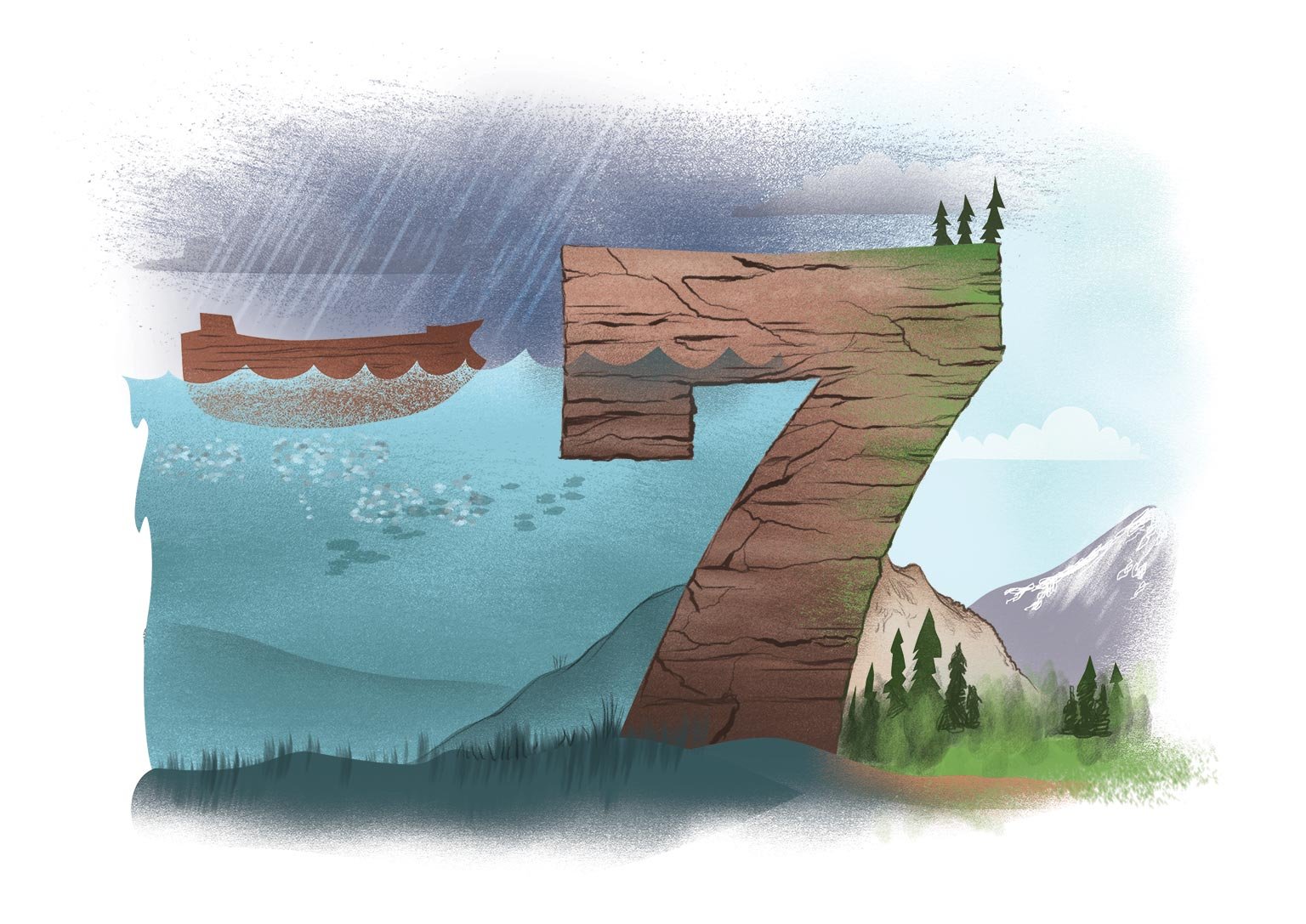
The Flood Was Only a Regional Event
Many Christians have heard arguments that the Flood account describes a regional or local event. In some cases, the Bible refers to “all” but the context indicates a narrower meaning. For instance, speaking of the famine in Joseph’s day, Genesis 41:54 states that “the famine was in all lands” (emphasis added), but we should not necessarily assume this famine covered the entire globe. The lands referred to here are all those nations that “came to Joseph in Egypt to buy grain” (Genesis 41:57 (NKJV)).
Yes, context does matter, and it often makes very clear what the Bible means. Genesis 6–9 describes a world-destroying global catastrophe, and not a regional flood.
- God said He would destroy “all flesh in which is the breath of life” and that “everything that is on the earth shall die” (Genesis 6:17; see Genesis 6:12, 7:21–23).
- The massive size of the Ark is much too large for carrying only regional flora and fauna.
- The Flood waters covered “all the high hills under the whole heaven” and covered the mountains to a minimum depth of fifteen cubits (Genesis 7:19–20).
- Why would God tell Noah to build an Ark when it would have been much easier to move out of the region?
- Why were flying creatures required to be on the Ark when they could easily fly somewhere else? The same is true for most land animals.
- The length of the Flood was much longer than any regional flood has ever been.
- The Bible unambiguously states that only eight people survived the Flood (Genesis 6:18, 7:23; 1 Peter 3:20), yet a regional flood would not necessarily have killed every other person on Earth.
- God explicitly stated that “the waters shall never again become a flood to destroy all flesh,” and He gave the rainbow as a reminder of that promise (Genesis 9:15–16). If the Flood were a local event, then God breaks His promise every time there is a major local flood.

The Oceans Do Not Have Enough Water to Cover the Earth
Another common concern is that Earth does not have enough water to cover the mountains. There are multiple difficulties with this misconception.
First, it is based on the assumption that the Flood needed to cover the mountain ranges we know today. However, the pre-Flood world was much different than today’s world. For example, it likely consisted of one continent (Genesis 1:9), and since the Flood destroyed that world, we cannot know with any certainty how high the pre-Flood hills reached. Our modern lofty peaks are formed out of sediments that were filled with animals killed during the Flood.
Second, the breakup of the earth’s plates at the start of the Flood would have heated the crust under the oceans, causing the seafloor to rise and pushing the water over the continents. Under these circumstances, the ocean (which is more than 6.5 miles, or 10.5 km, deep in some places) had plenty of water to cover the earth.
Third, there is tremendous evidence for a global Flood that deposited layers across continents. Many strata were laid down in rapid succession, and then these layers were crumpled while the sediment was still soft. Ocean fossils are now found on the earth’s highest peaks.
Finally, additional water may have come from deep in the earth. The mantle has a water-trapping mineral called ringwoodite, which researchers now think may contain as much water as the oceans.4
Ironically, most geologists believe Mars once had massive floods. If a planet with no known liquid water can have a flood of biblical proportions, then it should not be hard to accept that our blue planet, 70% covered in water and possibly containing far more water locked in the mantle, could have had a global Flood.

The Genesis Flood Account Was Copied from Ancient Myth
In the past two centuries we have discovered flood stories that predate Moses, so experts regularly claim the Flood account is just another myth borrowed from other ancient cultures. Christians who have bought into this line of reasoning underestimate the many differences between Genesis and these stories, while undermining the authenticity of Scripture.
The Bible gives us the true account, and any version that varies from this record must therefore be a distortion of the original history (or a complete fabrication). The Bible does not read like any of these myths; it relates a sober account of the righteous judgment a holy God sent upon a wicked world while sparing one family. Yet the Ancient Near Eastern myths include all manner of legendary details and trivial reasons the gods flooded the earth.
For instance, the biblical account is the only ancient record that has an Ark on which the people and animals could actually survive a global flood. The cube-shaped boat from the Epic of Gilgamesh was large, but it would have rocked so much in stormy seas that its passengers may not have survived. The circular boat described in a recently translated Mesopotamian tablet could not have endured such a flood. The dimensions of the biblical Ark, in contrast, are perfect for remaining afloat in a turbulent ocean.
Furthermore, the biblical account does not localize the event as do most of the flood legends. In many of these stories, the boat lands on a nearby mountain familiar to the people of the region. The biblical account has the Ark settle on a mountain far away from the land in which Moses wrote the account. This localizing tendency is seen in other features of the legends too, from the shape of the boat to the animals sent off to search for land. Yet the Bible consistently treats the account as something that was universal to mankind.


The Ark Has Been Found
Dozens of expeditions have searched the slopes and summit of Mount Ararat in hopes of making one of the greatest archaeological discoveries of all time. A handful of explorers claimed to have seen the Ark or pieces of it. Photos and satellite images have shown formations that can be construed as being Ark-shaped, but they are not conclusive.
The Durupinar Site, popularized by Ron Wyatt, is often touted as the resting place of the Ark. Located about 15 miles (24 km) from the summit of Mount Ararat, this “Ark-shaped” formation even yielded artifacts supposedly found at the site. Yet qualified geologists, including creationists who would love to find Noah’s Ark, have traveled to the site and dismissed it as a natural formation, one of several like it in the area.5
Tim Chaffey, AiG–US, answers the most-asked questions about Noah and the Ark.
The Bible states that the Ark landed on the “mountains of Ararat” (Genesis 8:4), not the modern Mt. Ararat. It appears that the modern mountain by this name is a volcano that arose after the Flood sediments had been laid, so it does not seem to fit the biblical description. Knowing this, investigators have searched other places in the region but without conclusive evidence. Ancient reports have told of people who claimed to have seen the Ark on Mount Cudi, for example, but these have not been verified in modern times.
Should we even expect to find the Ark? Even if frozen in ice, it is highly doubtful that a wooden structure would survive the elements for more than four millennia. As exciting as the Ark’s discovery would be for Christians, hardened skeptics who refuse to believe what Moses already wrote in God’s Word will refuse to believe even the most amazing of miracles (Luke 16:31).
Conclusion
Misconceptions will continue to spread concerning Noah’s Ark and the Flood. Hollywood certainly has not helped. The only antidote is a diligent study of God’s Word, being careful to separate what is actually in the text and our preconceived notions.
Our primary mission is to defend the truth of God’s Word, as plainly stated from the beginning in Genesis 1–11. Skeptics will continue to mock the Flood account until the very end (2 Peter 3:3–6), but if we faithfully proclaim the global judgment in Noah’s day, the Holy Spirit may use it to warn and convict people of the coming judgment. We must also explain the only way to be spared from God’s wrath: turn from sin and trust in Jesus Christ’s sacrificial death, burial, and Resurrection.
Noah’s Ark Quiz:
How Well Do You Know the Flood Account?
Many of our ideas about the Flood come from sources outside of Scripture: pop culture, traditions, and our own imagination. In some cases, these ideas may be correct, but what does the Bible really say?
Tap TRUE or FALSE to answer each question.
Noah’s Ark Quiz: How Well Do You Know the Flood Account?
Many of our ideas about the Flood come from sources outside of Scripture: pop culture, traditions, and our own imagination. In some cases, these ideas may be correct, but what does the Bible really say?
- No one had ever seen a boat before Noah built the Ark. TRUE or FALSE
- Noah had no prior knowledge of shipbuilding when he built the Ark. TRUE or FALSE
- The rainbow after the Flood was the world’s first rainbow. TRUE or FALSE
- Noah and his family built the Ark all by themselves. TRUE or FALSE
- The Bible says Noah was mocked by the people around him. TRUE or FALSE
- The Ark landed on Mt. Ararat. TRUE or FALSE
- The Flood lasted 40 days and 40 nights. TRUE or FALSE
- Carnivores were on the Ark. TRUE or FALSE
- Noah brought seven of each kind of clean animal. TRUE or FALSE
- Noah spent a long time tracking down all the animals needed on the Ark. TRUE or FALSE
- The Bible explicitly says Noah pleaded with people to join him on the Ark. TRUE or FALSE
- God gave Noah all of the detailed instructions he needed to build the Ark. TRUE or FALSE
Answers
- Probably false. While the Bible never mentions boats prior to the Flood, it is possible people used boats for travel or shipping.
- Probably false. The Bible never says that Noah was an amateur shipbuilder. What we do see in Scripture is that God often uses highly qualified people in building projects. Noah lived for more than five centuries before building the Ark. He had plenty of time to learn the trade either before or after his calling.
- Probably false. While the Bible does not mention rainbows prior to the Flood, we should not assume the water cycle and physics operated differently before the Flood. Some people also suggest a canopy surrounded the earth before the Flood, but that is not clearly described in the text. Also, this view causes many scientific problems.
- Probably false. Scripture does not tell us if Noah had any assistance, but he may have had plenty of help from not only family but also hired hands. While the Bible mentions only Noah in connection with the Ark’s construction (Genesis 6:22; Hebrews 11:7), it is common to mention only the name of the project’s leader (see 1 Kings 6:14; 7:1).
- False. The Bible never mentions that Noah was mocked, although this reaction is perfectly consistent with the way scoffers treat genuine believers, so it may have happened.
- False. Modern Mt. Ararat is a dormant volcano that did not reach its current height until years after the Flood. The Bible says the Ark landed in the mountains of Ararat, so there are many potential peaks it could have been on.
- False. While the initial Flood mechanisms lasted for 40 days and nights, the Ark came to rest approximately 150 days after the Flood began. Noah and his family were in the Ark for about a year.
- Unclear. It’s true that some kinds of animals on the Ark later produced descendants that are carnivores. It’s also true that some animals were carnivorous prior to the Flood as a result of the Fall, but this doesn’t mean that every member of each kind was carnivorous.
- Unclear. Many English translations state that there were “seven pairs” of clean animals and birds on the Ark while others just have “seven.” The Hebrew phrase literally translates as “seven seven, a male and his female.”
- False. In Genesis 6:20 God said that the animals would come to Noah.
- False. The Bible never mentions this idea, and it does not reveal what Noah may have said to his contemporaries. God had only promised Noah that he and his household would be on the Ark (Genesis 6:18). However, since the New Testament describes Noah as “a preacher of righteousness” (2 Peter 2:5), many Christians believe he would have pleaded with others to join him.
- Unclear. Scripture often records summaries of accounts, so God may have revealed more to Noah about the Ark’s construction. However, it’s also possible that what is recorded in the Bible is all of God’s instructions to Noah, meaning that Noah was required to figure out many details by himself.
Answers Magazine
January – March 2015
This issue clears up ten common misconceptions about the Flood. Also discover the most profound evidence for creation on the planet.
Browse IssueFootnotes
- Kenneth A. Mathews, The New American Commentary: Genesis 1–11:26 (Nashville: Broadman & Holman Publishers, 1996), 193–194; Tim Chaffey and Bob McCabe, “Framework Hypothesis” in How Do We Know the Bible Is True? volume 1, ed. Ken Ham and Bodie Hodge (Green Forest, Arkansas: Master Books, 2011), 195.
- https://answersingenesis.org/noahs-ark/feedback-are-wooden-ships-reliable/
- John Woodmorappe, Noah’s Ark: A Feasibility Study,1996. Earlier this year, a study conducted by students in the physics department of the University of Leicester concluded that Noah’s Ark could have remained afloat with 70,000 animals on board. See http://www.telegraph.co.uk/science/science-news/10740451/Noahs-Ark-would-have-floated...even-with-70000-animals.html.
- ttp://news.discovery.com/earth/oceans/oceans-of-water-found-locked-deep-inside-earth-140612.htm
- https://answersingenesis.org/creationism/arguments-to-avoid/special-report-amazing-ark-expose/
Recommended Resources

Answers in Genesis is an apologetics ministry, dedicated to helping Christians defend their faith and proclaim the good news of Jesus Christ.
- Customer Service 800.778.3390
- Available Monday–Friday | 9 AM–5 PM ET
- © 2025 Answers in Genesis



